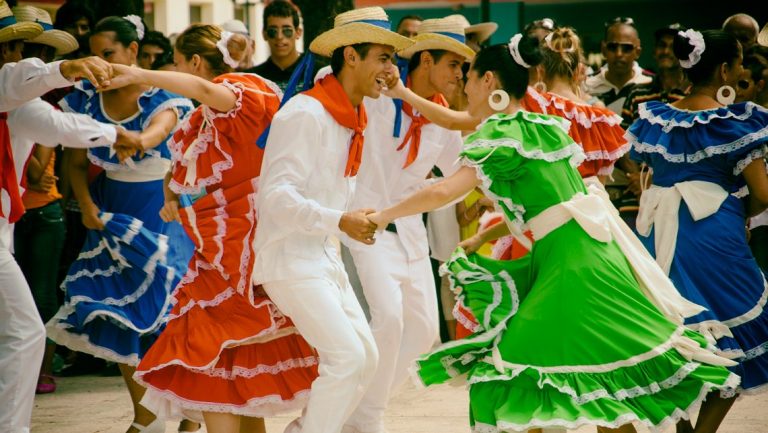I have always been a faithful defender and lover of the traditional popular culture, because my roots come from a village that cultivates them, Majagua, a municipality of the province of Ciego de Ávila that as we all know, until 1976 when the current political-administrative division in our country took place, was part of Camagüey.
The history of the “Bailes guajiros” of my town goes back to the 20th century, back in the 30s when Pedro García, who came from Sancti Spíritus organized and taught those dances and placed on each side one of his sons, Irene and Alejandro. From there arise the blue and red, the custom demands that each side was led for a marriage or a man and a woman, who represented them. And from then on, my maternal grandparents carried the Blue Band, and later when their children were born, they also joined, having each one their role in it.
One day these celebrations were lost for various reasons, it was even commented that it was due to “fights” that on occasions took place between families even because they belonged one side or another, but the truth was that the older people were dying and all there was left were the memories, as well as the longing for those healthy competitions. With the triumph of the Revolution and after some years, the descendants, already men and women, most of them with children, were motivated by the former Council of Culture, and made sure that this important tradition saw the light once again.
And so, a day of a year, which I do not remember because I was very little and already living in Camagüey, some people came to my house to ask the youngest daughter of my grandparents, my aunt, to prepared to take on the role of the “old woman of the Blue Side “, ” Carmela ” and my uncle, would be ” the old man “,” Don Pepe “, a character that stayed with him until the last years of his life. Since then, the chorus of: “Anda Pepe monta atrás, que la yegua se te va “, and “Doña Joaquina ponte en vela, que la yegua se te va”, began echoing once more among blues and reds, respectively, and continues to be heard every November during the celebrations of the Week of Culture in this town.
From that moment on, my uncle Tico was always in charge of his side or within the board, year after year, and still there hasn´t been no one who dances the “caringa” like him, whenever people talk about traditional popular culture, must mention him. From generation to generation, we began taking part in this tradition, to the extreme that everyone in the family has a responsibility within the comparsa, even those who, like me, are a little bit far, but also whenever possible have danced in it, feeling the thrill of being part of a lineup of up to a hundred couples who respond in unison, “Viva” when the sole voice of the director says, loud and clear: “Viva el Bando Azul”.
This festivity was awarded with the National Prize of Community Culture presented by the Ministry of Culture and the National Council of Houses of Culture in 2000, as well as other recognitions and prizes throughout all these years which confirms that these traditions are part of our national identity.
Translated into English by Ashley Rodríguez Pérez






